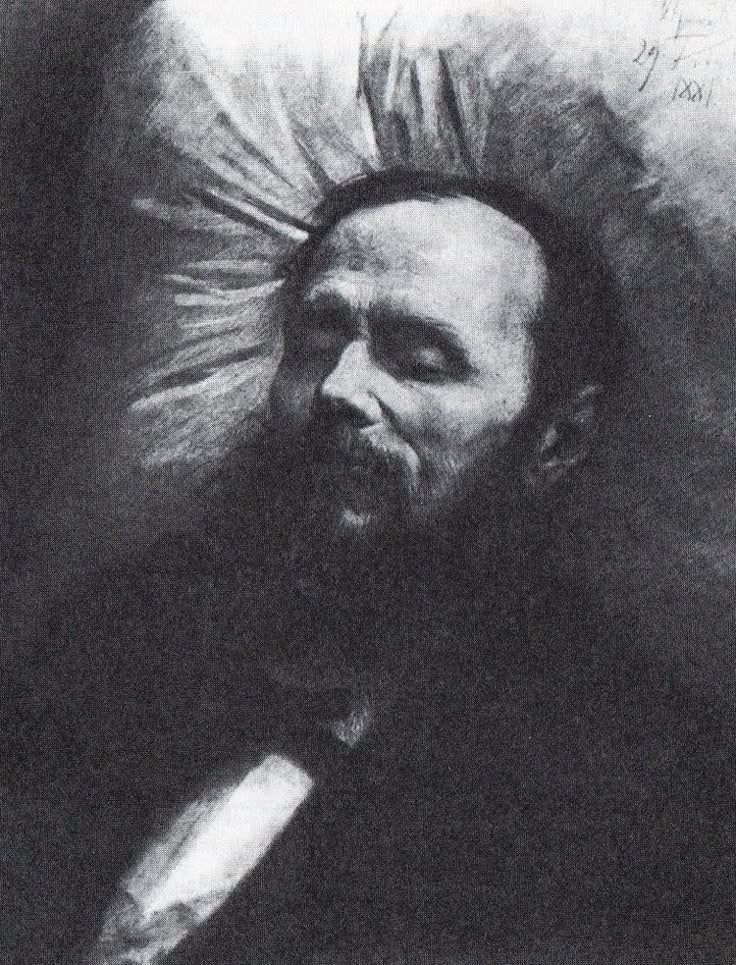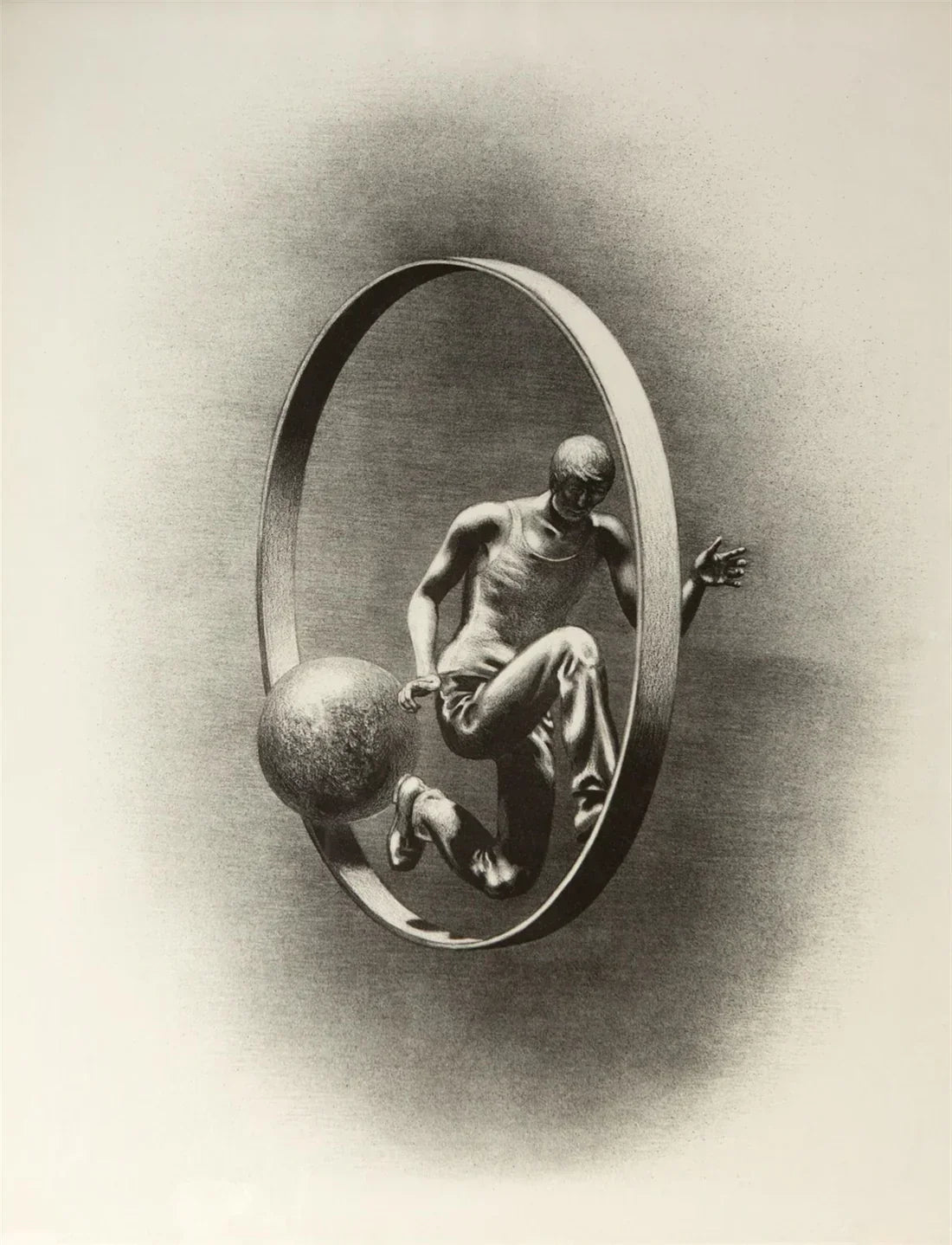June 17, 2025
Creativity Emerges from Discomfort
Why is it that when we run, we transcend our usual state of consciousness?
Why do artists use running, and especially runs suffered, as a tool for unlocking new and unique ideas, seemingly hidden inside them?
The answer is counterintuitive according to the Physician Dr Rangan Chatterjee, as when it comes to ideation, less is in fact more.
“We used to think that when we stopped focusing on a task in front of us, our brains would go to sleep,” he explains. “That is not what happens. There is a part of the brain, called the default mode network (DMN), that goes into overdrive when we stop focusing on a task in front of us.”
This goes some way to explain the phenomenon of stepping away from a creative impasse, tearing through a 5k, and re-emerging laden with answers.
But what if there is something deeper going on?
When you discover the backstory of some of the most moving works of art, the pattern emerges: profound creativity is furnished in the white heat of pressure and discomfort.
Is the explanation for the huge over-representation of creative Acid Runners, as simple as the need to suffer, to unlock creative genius?

Marshalsea Prison sick ward & torture equipment
In 1824, Charles Dickens' father John was committed to Marsalshea debtor’s prison in Southwark, 400 metres from where I’m sat now, alongside Charles’ mother and younger siblings.A 12-year-old Charles was forced to find lodgings for himself, working in a boot-blacking factory off the Strand for six shillings a week.“No words can express the secret agony of my soul” he later wrote of this time.

The employment of children under 14 was outlawed in 1933
Forced out of his middle-class comfort and crucially out of school, to work in a rat-infested factory, Dickens fostered a “deep personal and social outrage” which heavily influenced his writing.
In adulthood his tour of the Cornish tin mines, where he witnessed children working in appalling conditions, and his visit to the Field Lane Ragged School, populated by starving, illiterate children, reinforced the social conscience that defined his work.

Child workers at a Cornish tin mine
In 1843 aged 31, and now a published writer, Dickens began having financial problems of his own.
Sales of his latest book Martin Chuzzlewit were tailing off, and his wife Catherine was pregnant with their fifth child. Charles was staring poverty in the face, for a second time.
Under extreme pressure from himself and his publishers, Dickens began work on A Christmas Carol in October. Written in a “white heat”, according to his sister-in-law, his most famous novella was finished by early December.
Most of the plot was developed in his head during night-time walks, often breaking into mazing runs, of 15 to 20 miles at a time through London.
In an almost maniacal state, his sister-in-law described how he "wept, and laughed, and wept again" as he constructed the tale.

Charles Dickens (1812 – 1870)
A Christmas Carol successfully opened its readers' hearts to the blight of the poor, and warned of the danger to society of tolerating widespread ignorance and genuine want amongst the lowest rungs.
Tiny Tim entered the collective ownership and folklore of London, despite his few mentions in the book, and touched everyone who read of him.
This was best symbolised by the fact that Dickens' hand-written manuscript did not include the sentence in the penultimate paragraph “... and to Tiny Tim, who did not die”, but was added later during the printing process.

Dr Felix's notes on van Gogh's severed ear
On 23rd December 1888, during a hallucinatory episode, the Dutch artist Vincent van Gogh cut off his left ear with a knife.
5 months later van Gogh voluntarily admitted himself into a mental asylum.
A month later, and still in the asylum, he painted his masterpiece, The Starry Night.

Vincent van Gogh - 'Prisoners Exercising'
The art historian Sven Loevgren stresses, with importance, that whilst the “visionary painting” was conceived out of discomfort and agitation, it was not during one of van Gogh’s breakdowns, many of which he barely remembered.
During his year-long stay in the converted monastery asylum, van Gogh was incredibly productive, painting Irises, Prisoners Exercising and 21 views from his bedroom, including Starry Night.

Vincent van Gogh - 'A Starry Night'
Channelling not just the jarring contradiction between his finite living quarters and a seemingly infinite universe, but also the vivid experiences of breakdown, van Gogh projected a hallucinatory character into the painting, which Loevgren describes as a “religiously inclined longing for the beyond.”
The painting depicts the view from his east-facing window but with the addition of an imaginary village. The viewer is drawn into a cosmos that seeks to absorb them, giving a “sensation of standing on the threshold of eternity.”
Here lies the irony. The viewer is struck by the peace and comfort of the view, but the artist's construction of this view, literally and figuratively, arises from self-imposed imprisonment.

The Gambler reflects Dostoevsky's own experience of addiction to roulette
In 1866, the Russian novelist Fyodor Dostoevsky had accrued huge debts to the ruthless publisher Stellovksi, on account of his all-encompassing gambling addiction.
As a means to pay his debts, Dostoevsky wagered that he would complete a new novel within 30 days. But if he failed, Stellovski would own the publishing rights of all his works, past and future.
For the first time Dostoyevky hired a stenographer, 20 year old Anna Snitkina, who transcribed his speech into shorthand every day, and more often than not, through the night.
These were two greats of their craft working under huge pressure. The master of high-literature Dostoyevsky had wagered his entire life's work, whilst Anna was a star pupil of Russia’s first stenography professor, and knew her reputation would either be destroyed or secured through this speculative endeavour.

'The Gambler' depicted by Valery Babanov
The pair finished the manuscript with only hours to spare.
However once completed, the devious Stellovski was unable to be found, hoping to prevent Dostoevsky from fulfilling his contract.
On Anna’s suggestion, they registered the manuscript at a police station and obtained a receipt, thus foiling Stellovski, and securing Dostoevsky’s finances and the ownership of his work.
The completed novella, The Gambler, reflects the conditions of its writing, following the protagonist Alexei’s gambling exploits and love interest, swinging from austere realism to absurdism.
There is no trace of hurry in the prose, with extraordinary characters entering and exiting seamlessly, notable for their own distinguishing features and also for their metaphorical reflection of the Russian national character.

Fyodor Mikhailovich Dostoevsky (1821 - 1881)
Beyond creative inspiration, the transcendent clarity that emerges from courage under pressure, also provides an emotional lucidity.
In Fyodor Dostoevsky and Anna Snitkina’s case, their combined struggle became a love story.
In Anna’s memoirs she describes how, a month after the completion of The Gambler, Dostoevsky asked her advice on an imaginary new novel.
In it an old painter proposed to “Anya”, a young woman. Dostoevsky asked Anna if it was possible for the woman to fall in love with the painter, who was different in age and personality. Anna answered that it was surely possible.
"Put yourself in her place for a moment. Imagine I am the painter, I confessed to you and asked you to be my wife. What would you answer?" Dostoevsky asked her.
Anna replied: "I would answer that I love you and I will love you forever".
The pair remained married until the death of Dostoevsky in 1881. Anna never remarried and in 1906 she created a room dedicated to Fyodor Dostoevsky in the State Historical Museum.
Memento Vivere



